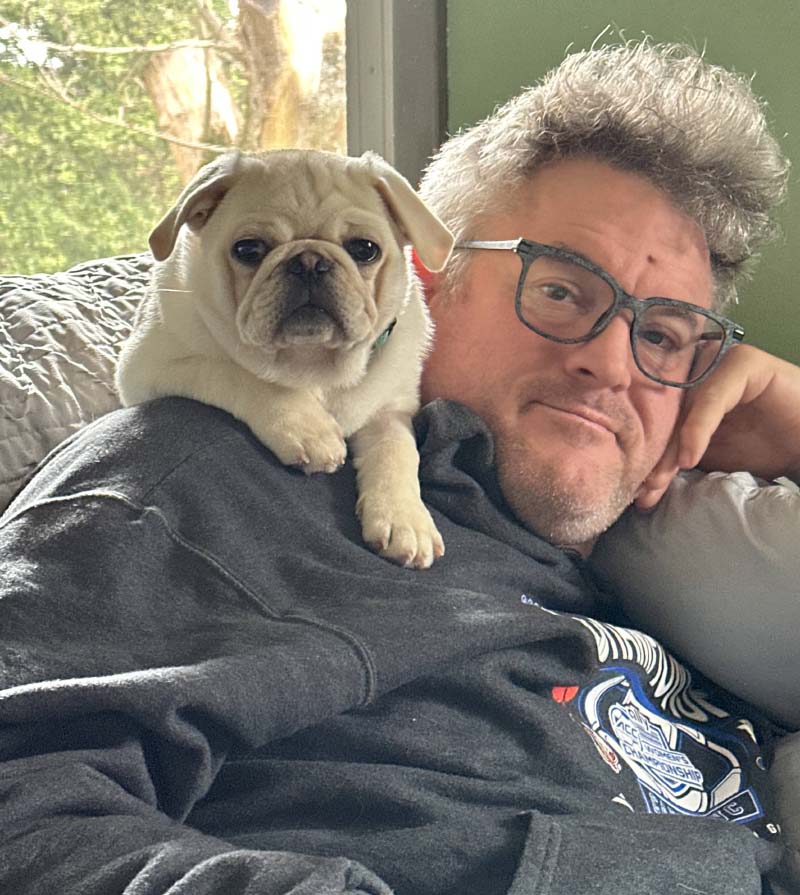College student saved her dad thanks to CPR training at Damar Hamlin's alma mater
By Deborah Lynn Blumberg, American Heart Association News

A few months after Buffalo Bills safety Damar Hamlin went into cardiac arrest during an NFL game, his alma mater – the University of Pittsburgh – trained its roughly 400 athletes in CPR and how to use an automated external defibrillator.
For soccer goalie Ellie Breech, it was a refresher of the skills she'd learned while working summers as a lifeguard at a pool in her hometown of Mechanicsburg, Pennsylvania.
Ellie also was quite familiar with the lifesaving potential of CPR. She grew up hearing about it around the dinner table. Her father, Ed Breech, is an emergency room nurse who has used it to save lives.
The training at Pitt was in the spring of 2023. In December, Ellie went home for winter break. She and Ed spent a day together doing a 10-mile hike.
On Christmas morning, Ed worked his usual night shift, then returned home and opened presents with his wife, Maggie; Ellie and her brother, Mack; and Mack's girlfriend. Then Ed went to the basement to take his daily post-work nap.
From the kitchen nearby, Maggie heard Ed making a loud snoring sound. It was unusual because Ed didn't snore. She called his name. When he didn't respond, she went downstairs.
She called out again but he didn't answer. Maggie thought Ed was playing a practical joke. She sat beside him and touched his arm once, then again. He didn't move.
"Call 911!" Maggie yelled.
Ellie placed the call then ran downstairs. Ed's face was turning blue. Ellie moved him to the floor and started CPR. She kept it up for nine minutes.
When the police arrived, they connected an AED to Ed.
The device said he had a "nonshockable" heart rhythm, or pulseless electrical activity. It's when the heart stops because its electrical activity is too weak to make it beat. This also meant the device couldn't be used to try saving his life. CPR was the only option for now.
EMTs came soon after. They put Ed in a mechanical chest compression device and took him to the same ER where he'd just been working only hours earlier.
In the hospital, as Ed's colleagues cared for him, his lungs filled with fluid. They performed more CPR. To give his heart and lungs time to heal, doctors put him on an extracorporeal membrane oxygenation, or ECMO, machine. It takes over the job of the heart and lungs, oxygenating blood and moving it through the body.
Ed was then transferred to a nearby hospital with more ECMO expertise. He was on the machine for five days. Five days after that, his breathing tube came out.
Ellie was with him as the sedatives he'd been given started to wear off. She noticed his eyes light up.
"Thank you for saving my life," he whispered to Ellie.
The family brought Ed a pug stuffed animal, a nod to all the rescue pugs they've had over the years. The doll didn't leave Ed's side. On New Year's, nurses dressed up the doll, fitting it with a surgical cap over a tiara and a noisemaker.

Finally, 22 days after his cardiac arrest, Ed went home. He had no brain damage from the ordeal.
"Immediate CPR is what gave my dad the best chance of survival, and the reason he probably doesn't have a brain injury today," Ellie said, "It was the great training I had."
Ed gained his strength back in outpatient therapy and he's back at work. Doctors sought a reason for why his heart stopped but never found one.
Maggie is thankful that Ellie was home that day and that in addition to knowing what to do, she was willing to try. "Ellie has composure and an ability to remain calm in a crisis situation. She's been that way from a young age," Maggie said.
Since Ed's cardiac arrest, the family adopted a real-life pug, a light beige puppy named George who has replaced the stuffed pug as Ed's constant companion. "He's Ed's little buddy," Maggie said.

At the time of Ed's cardiac event, Ellie was studying engineering. Now she wants to work in medicine. She jokes with Ed that he didn't have to have a medical emergency to get her to pursue the same field as him. She's figuring out what type of role might suit her best.
"I really am a people person, but science is also where my heart is," she said.
In February, Ellie was honored at a Pitt men's basketball game alongside her dad and other health care heroes. Hamlin, who graduated in 2020, presented her with an award. Ellie shared her family's story with the NFL player.
"I think it really warmed his heart," Ellie said.
As for Ed and Ellie, dining room table conversations about CPR have a new resonance now that both have a deeper understanding of the lifesaving power of CPR.
"I don't think I would have been able to save my dad's life if he hadn't shared how he used it to save so many others," Ellie said. "He's taught me to be very, very fearless."

Stories From the Heart chronicles the inspiring journeys of heart disease and stroke survivors, caregivers and advocates.





